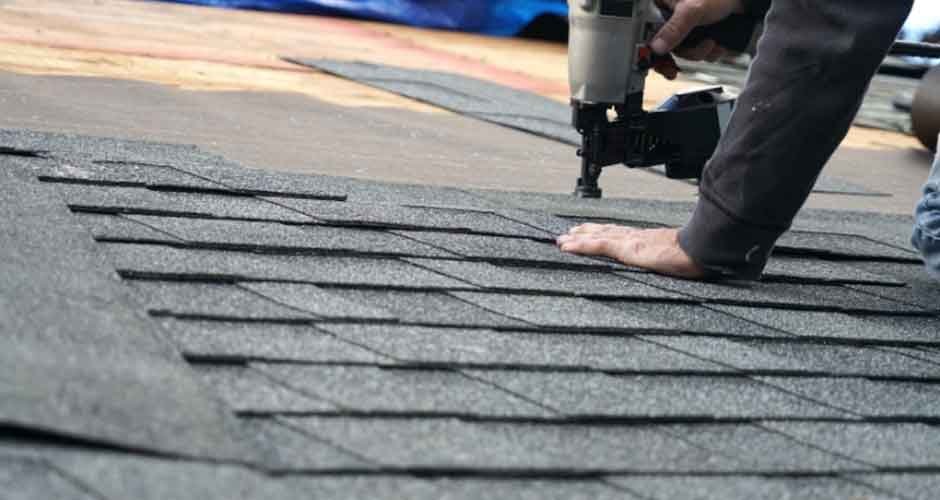Your roof serves as your home’s first line of defense against the elements, making its condition critical. Sometimes, a simple repair won’t suffice, and a full roof replacement becomes necessary. This article aims to guide homeowners through understanding when to replace their roof, the replacement process, choosing the right material, and selecting a professional contractor.
Understanding When to Replace Your Roof
Identifying the signs of a deteriorating roof is key to timely replacement. The most common indicator is your roof’s age – a typical asphalt shingle roof lasts around 20 to 25 years. Noticeable leaks, water damage, or shingle damage like curling, cracking, or missing shingles may also signal a need for replacement. As an expert property management company, www.krsholdings.com/arlington-property-management warns, ignoring these signs can lead to more severe damage and potentially higher costs down the line.
Roof Replacement Process
- Initial Assessment: This is the first step in the roof replacement It involves a thorough inspection of the existing roof to evaluate its condition and the extent of damage. Any signs of sagging, leakage, water damage, and the overall wear and tear are assessed during this stage. This helps to determine the necessity of the replacement and plan the subsequent steps.
- Removal of the Old Roof:This involves stripping off the existing roof down to the deck. By doing so, any hidden damage, especially in the decking layer, can be identified and addressed. This step also ensures a proper base for the new roof.
- Inspection of the Roof Deck:After the old roofing material is removed, the roof deck is inspected for any signs of damage like rot or sagging. If any damage is found, those sections of the decking are replaced to provide a solid foundation for the new roof.
- Installation of the Underlayment:The underlayment, which serves as an additional barrier against water and wind, is then installed over the roof deck. This layer is crucial for preventing potential leaks and enhancing the durability of the roof.
- Installation of the New Roofing Material:This step involves laying the new roofing material, whether it be asphalt shingles, metal panels, wood shakes, or any other material. Proper installation is essential to ensure the effectiveness and longevity of the roof.
- Installation of Flashing:Flashing is installed around any roof protrusions like vents, chimneys, or skylights, and along the roof’s valleys and edges. Flashing is crucial to prevent water leaks in these vulnerable areas.
- Final Inspection and Cleanup: Once the new roof is installed, a final inspection is carried out to ensure the quality of the work. The area around the home is also cleaned up, with any debris or discarded materials being properly disposed of.
- Project Completion and Warranty: Upon satisfactory completion of the project, the contractor provides a warranty for the new roof. This warranty typically covers the materials used and the workmanship, offering homeowners peace of mind.
Remember, the time and resources required for a roof replacement can vary significantly based on the size and complexity of the roof, as well as the specific roofing materials used.
Selecting the Best Roofing Material for Your Replacement
There are many roofing materials available today, each with its unique characteristics. Asphalt shingles, being economical and relatively durable, are the most common. Metal roofs, while pricier, offer increased longevity and can withstand harsh weather conditions. Slate roofs provide a classic aesthetic and exceptional durability, whereas wood shakes offer a natural, rustic appeal.
Selecting the best material for your replacement involves careful consideration of various factors. These include your local climate and weather patterns, the lifespan of the material, your aesthetic preferences, and, importantly, your budget.
Hiring a Professional Roofing Contractor for Replacement
Though DIY culture is popular, some tasks should be left to professionals, and roof replacement is one of them. A reliable roofing contractor has the necessary skills, experience, and safety equipment to ensure a proper and safe installation.
When selecting a contractor, make sure to check their licenses and insurance. Look at their past work and ask for references to gauge their reliability and quality of work. Additionally, it’s advisable to compare quotes from several contractors to ensure you’re getting the best value for your money.
Conclusion
Roof replacement is a significant home improvement project that requires careful planning and execution. Recognizing when your roof needs replacing, understanding the process, choosing the right materials, and hiring a professional contractor are all key steps in this journey. By prioritizing the condition of your roof, you’re investing in your home’s safety, comfort, and longevity. So when the time comes, don’t delay – a new roof is an investment worth making.






